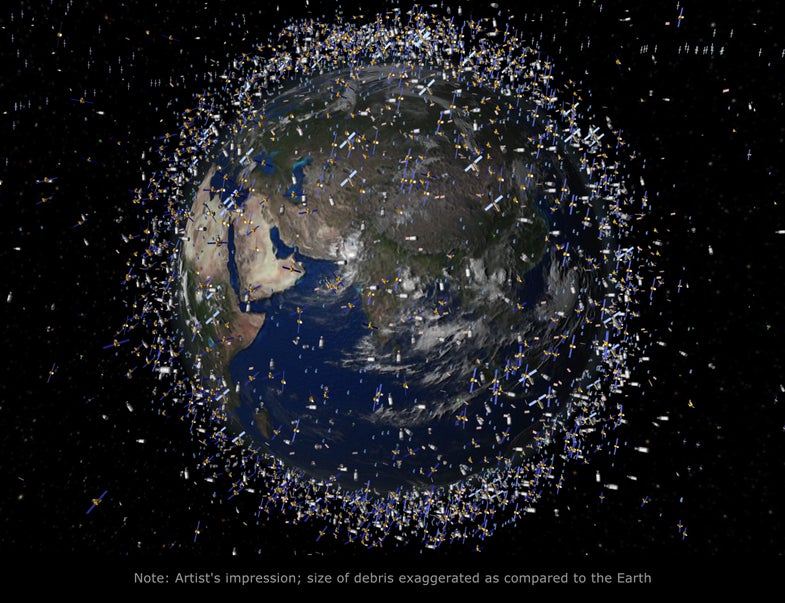DARPA’s Giant Space Junk Net Could Remove Almost All Orbiting Debris
DARPA has a thing for butterfly tech. Last week it was sensors based on butterfly wings. This week, it’s a...

DARPA has a thing for butterfly tech. Last week it was sensors based on butterfly wings. This week, it’s a space junk capturing vehicle armed with 200 nets that gathers space garbage, much as a lepidopterist would net butterflies for a specimen collection. The technology was presented on Friday at the annual Space Elevator conference.
The Electrodynamic Debris Eliminator, or EDDE, is the brainchild of engineers at Star Inc. and ostensibly the DARPA backers that are funding its development. In practice, EDDE would zip around low earth orbit snaring bits of space garbage in its many nets where they cannot be a menace to other orbiting spacecraft. Star’s CEO estimates that over seven years, 12 EDDE craft could clean up all 2,465 objects over 4.5 pounds that are currently being tracked through LEO.
Once EDDE has a piece of space junk cornered, it can either hurl it into the South Pacific where it has little chance of doing any harm, or put it on a trajectory to burn up during re-entry. Or, Star insists, the pieces of junk could be recycled right there in space to create raw materials for the construction of future orbiting space stations or satellites.
It sounds pretty out there, but Star has already begun testing the tech and should conduct a test flight in 2013. If that succeeds, EDDEs could begin a full cleanup operation in LEO by 2017.